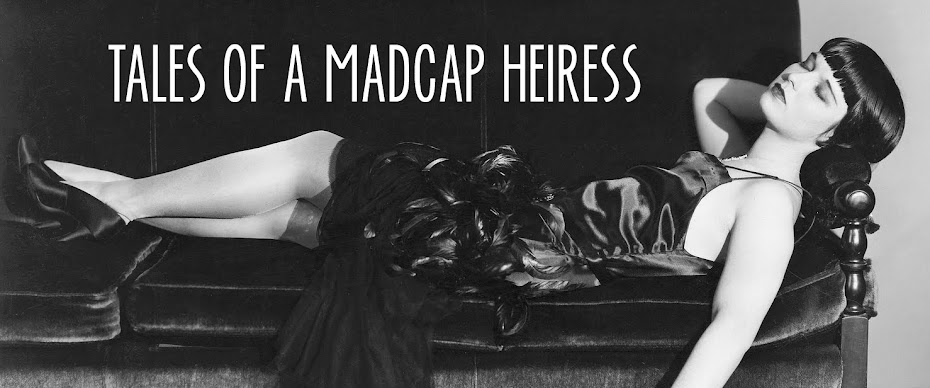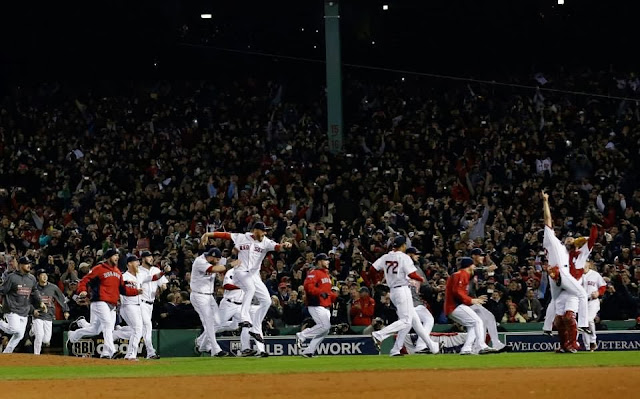"Portrait of Robert Capa, Naples" George Rodger (1943)
Today is the 100th anniversary of the birth of Robert Capa, the greatest war photographer of the
20th century. Ever since I read Richard Whelan’s biography on Capa
in high school, I’ve been fascinated with the man and his work. Although my
blog may be filled with images of Cary Grant, Capa is my ultimate history crush.
I simply adore him.
Capa was talented,
daring, funny, brave, and charming (he was a noted ladies man) who made friends
wherever he went, which just happened to be all over the world. Ernest
Hemingway noted that Capa “could speak seven languages but none of them well,”
and friends dubbed his way of speaking “Capanese.” He could appear carefree and
irresponsible (which he often was) but was serious about his work and hated
war though he covered five of them. Even when he was scared, and he
certainly was in enough situations to warrant feeling that way, he masked his
fear and never asked for special treatment. He went where the fight was, right
alongside the soldiers. He defined what it meant to be a war photographer and the image he created helped to romanticize the idea of a photographer in combat although he would have been the first to tell you there's nothing romantic about war. Ultimately Capa’s dedication to his craft, to get the best photo no matter what, would cost him
his life.
He was born Endre Ernő Friedmann in Budapest, Hungary on October
22, 1913 to a Jewish family of dressmakers. As a teen, he was involved in student
political protests, which led to his arrest and the authorities telling him to
leave the country. He moved to Berlin to study journalism but took up
photography instead when a fellow Hungarian, Eva Besnyö, got
him a job as an errand boy with the photo agency Dephot. He was soon helping
out in the darkroom and in December 1932, he was sent on assignment to
Copenhagen to shoot a lecture by Leon Trotsky. The resulting image would
be the first time his work appeared in print.
With the rise of
Hitler in 1933, he left Berlin for Paris. The following year he met a dynamic German émigré,
Gerta Pohorylle and the two became a couple. He taught her the fundamentals of
photography and she helped him book jobs. Soon they were shooting together.
But finding work was difficult so in 1936 they concocted a plan to help increase the sale of Friedmann’s photos. With Pohorylle acting as an “agent” she made it known that she represented a famous American photographer who was available for work but that he demanded only the highest commissions. The name they came up with for the great photographer? Robert Capa. Derived reportedly from actor Robert Taylor and director Frank Capra, the name had a decidedly American ring to it and was easier to remember than Friedmann. Their ruse was soon discovered but Friedmann adopted the name permanently and would be known as Robert Capa for the rest of his life. Pohorylle also changed her name to Gerda Taro.
In August 1936,
Capa and Taro headed off to Spain to cover the Spanish Civil War, which had
erupted the month before. Capa would make numerous trips to the war-torn country
over the next few years where he would hone his skills as a war photographer.
On September 5,
1936, in Cerro Muriano near Córdoba, Capa cemented his reputation with a photo called "Loyalist Militiaman at the Moment of Death, Cerro Muriano, September 5, 1936" but better known as “The Falling Soldier,” in which he captured a
Republican fighter at the moment he was struck by a bullet. Capa later claimed
that he just lifted the camera above his head and took the shot without looking
through his viewfinder. Controversy has followed the image with some believing
that it was staged. Whatever the truth, that photo has become one of
the iconic images of war. Capa was finally
getting attention for his work and the following year the magazine Picture Post ran a piece on him,
declaring Capa “the greatest war photographer in the world.” He was just 25.
Taro was not so
lucky. Now a photographer of some talent, she made a trip to Spain in the
summer of 1937 without Capa. During a retreat, she was injured when a tank rammed the car whose
running board she was riding on. She died the following day on July 26, 1937.
Capa, who had proposed marriage to Taro (she turned him down), was devastated
by her death and some believed this to be the reason why he never married.
Shortly afterwards Capa made
his first trip to America to see his mother and brother, Cornell, who were living in
New York. After securing a contract with Life
magazine, he travelled to China where he spent seven months covering the Second Sino-Japanese War.
He returned to Spain in 1939 to witness the end of the war and was working in France when World War II broke out. Capa returned to America where he worked on a series of assignments for Life but events in Europe beckoned.
1941 found Capa in London photographing Londoners
recovering from the Blitz. After a trip back to the States to do a story on Hemingway
and Martha Gellhorn in Sun Valley, Idaho (they had become friends earlier in
Spain), Capa returned to Europe and the war.
Once again Capa showed grace under pressure. After covering stories in England, he travelled with Allied troops
in Tunisia and Italy. Capa did what the soldiers did only he carried a camera
instead of a gun. When they went without heat or beds to sleep in so did Capa. And when the 17th Airborne Division parachuted into
Germany, Capa jumped alongside them.
But Capa’s big day came on D-Day, June 6, 1944, when
he and the 16th Regiment of the 1st Infantry Division landed
on Omaha Beach as part of the second assault wave.
He took 106 images that day while under enemy fire. The four rolls of film were
rushed to London where an overzealous lab technician accidentally set the dryer too
high causing the negatives to melt. All but 11 images were destroyed. “The
Magnificent Eleven” became the definitive images of the D-Day invasion and
stand as testimony of Capa’s famous quote “if your photographs aren’t good
enough, you’re not close enough.” Capa would go on to cover the liberation of
Paris, the Battle of the Bulge, and the Allied capture of Leipzig and
Nuremberg.
"Ingrid Bergman and Alfred Hitchcock on the set of Notorious" Robert Capa (1946)
After the war, Capa became an American citizen
and went to Hollywood with the idea to make movies. There he continued an affair
with Ingrid Bergman that had begun in Paris. When she made Notorious with Alfred Hitchcock, Capa took stills on set. (Can you imagine, Capa and Cary Grant in the same room?) It is
believed that Capa and Bergman were the inspiration for James Stewart and
Grace Kelly’s characters in Rear Window.
During this time he worked on his war memoir that would become Slightly Out of Focus. It’s a great
read, fast and witty like its author. But Capa hated Hollywood and left.
In 1947, tired of magazines owning photographers’
work and with the idea of making more money, Capa along with Henri
Cartier-Bresson, George Rodger, David “Chim” Seymour, and William Vandivert
formed Magnum Photos, a photographic cooperative. Based in Paris, the agency
would attract some of the best photographers in the world.
"Robert Capa & John Steinbeck, Self portrait" (1947)
Later that same year, Capa toured the Soviet
Union with John Steinbeck who wrote about their adventures in A Russian Journal with photos by Capa. Some
who believed the Communists had manipulated the two criticized the trip. But
Capa was already off on another assignment.
 "Woman carrying luggage accompanied by a small boy, Haifa, Israel" Robert Capa (1949)
"Woman carrying luggage accompanied by a small boy, Haifa, Israel" Robert Capa (1949)
For the next two years most of his photography was of Israel. He covered the 1948
Arab-Israeli War and the plight of refugees pouring into the country. Many of his resulting photos were published in Irwin Shaw’s book Report
on Israel. By now Capa was tired and seemed to have had enough of war.
"Robert Capa and George Ninaud (office manager) at the Magnum Paris office." George Rodger (1952).
Beginning in 1950, he lived in Paris where he
enjoyed going to the track, gambling, and seeing various women. His focus was on Magnum, which he became president of in 1951. Capa’s
charm proved useful in persuading photographers to join the agency and in
putting off creditors when funds were low.
The Korean War had started and was the first major conflict that
Capa sat out. He insisted that his days as a war photographer were over and instead did pieces on European locales and ski resorts.
In 1954, Capa was invited to travel to Japan for
the launch of a new camera magazine. There he was feted as a hero and spent his
time photographing children. During the visit, he received a call from Life who, needing a replacement photographer in Indochina, asked Capa to fill in and offered him a large salary.
In need of the money, Capa accepted and flew to Hanoi.
On May 25, he travelled with a French convoy out
to the Red River delta. At one point, Capa left the jeep he was riding in and
walked up a way, taking photos of a group of soldiers advancing through the
grass. Moments later he stepped on a landmine and died at 2:55 pm. Robert Capa
was 40 years old.
"Robert Capa" Gerda Taro (1937)
Today Capa remains a giant in the field of war
photography. The Robert Capa Gold Medal, created in his honour by the Overseas
Press Club of America, is awarded every year for "best
published photographic reporting from abroad requiring exceptional courage and
enterprise." His brother and fellow photographer, Cornell Capa, founded
the International Center of Photography (ICP) in New York in 1974 to keep the
legacy of his brother’s work and other 'Concerned Photography' alive. It is
home to the Robert Capa Archives and routinely hosts exhibits of Capa’s work.
To celebrate his centennial and
the upcoming “Capa in Color” exhibit in January at the ICP, Magnum will be
posting a different Capa photo each day, for the next 100 days, along with an image that “responds” to
Capa’s. Dubbed “Get Closer,” they are asking people to
post their own responses with the tag #GetCloser100. For more information,
visit here.
So Happy Birthday, handsome. You're the top!

















































